News
Where change and progress begin — it’s always the news. Our “news” category is a window into the world of the latest events and important updates. We are always at the forefront, bringing you all the hottest and most captivating stories. Whether it's global events, scientific discoveries, entertainment, or tech news, we keep you in the loop. Come here to be the first to know what’s happening — this is your window to the world of events and information.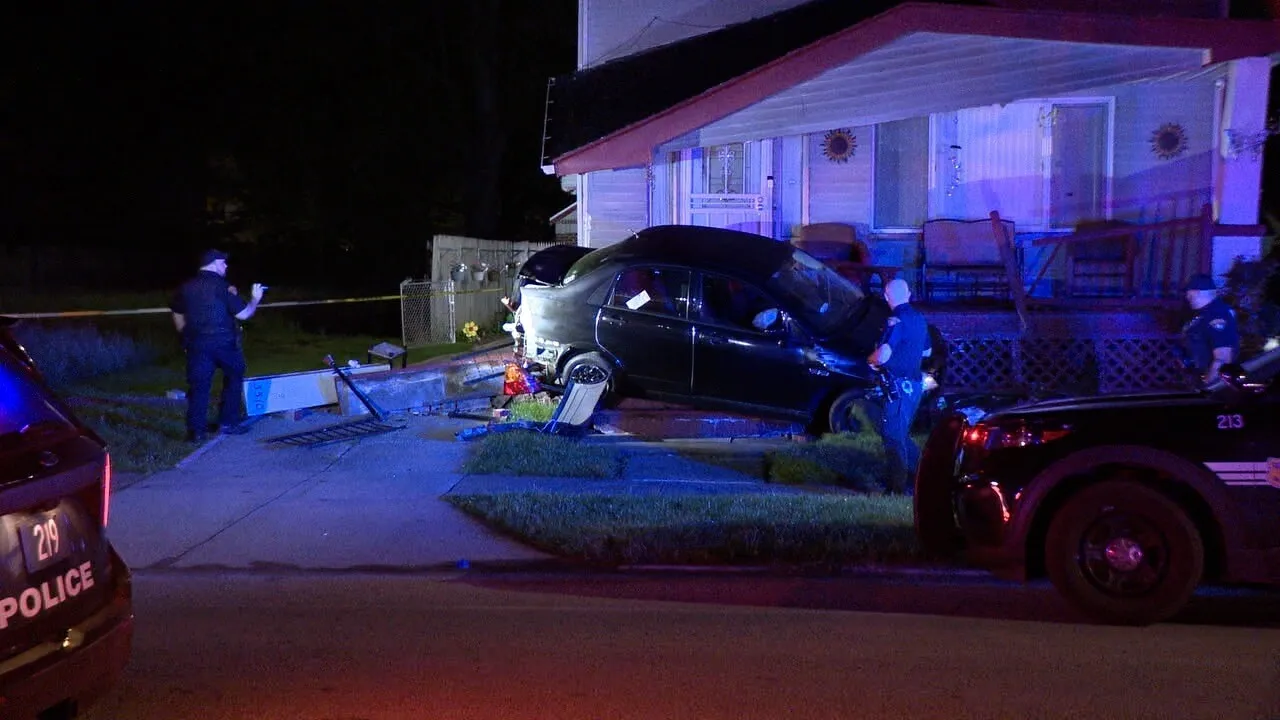
Transport
20
Car crashes into house in Cleveland, leaving driver on the brink of life and death
CLEVELAND, Ohio — In the darkness before dawn, as Western 44th Street in Cleveland was sleeping in silence, the peaceful neighborhood was shattered by a deafening roar. Around 3:15 a.m., a 25-year-old man, driving at reckless speed, lost control of his vehicle, crashed into a tree, and then rammed into a house at the corner of Daisy Avenue. The accident, leaving the house with gaping holes in its walls and the driver trapped beneath the wreckage, served as a stark reminder of life's fragility in a city battling traffic tragedies.
Cleveland police, who arrived at the scene within minutes, found a horrifying sight: a battered car half-embedded in the brick wall of the house and the driver pinned under metal debris. Rescue workers needed specialized tools to extract the young man, who was ultimately rushed to MetroHealth Hospital in critical condition. "It's a miracle he's still alive," said one officer on the scene, whose name was not disclosed, describing the chaos that reigned at the intersection.
The house, a modest single-story structure, sustained significant damage: the facade was shattered, windows broken, and interior walls partially collapsed. The residents, a family of three, miraculously escaped injury, though their home is now uninhabitable. "We woke up to a sound like an explosion," recounted Maria Gonzalez, a neighbor who watched as rescuers worked under flashlight illumination. "It could have ended much worse."
Shadows of the Night: What Led to the Crash?
The police have not yet disclosed the driver's name, citing an ongoing investigation, but preliminary data indicate high speed as a key factor. According to sources close to the investigation, there were no skid marks on the road, which may suggest a loss of control or driver distraction. Blood alcohol or drug tests have not yet been completed, but law enforcement circles are whispering about possible fatigue or recklessness, considering the late hour.
Western 44th Street, a narrow artery in the area known as Clark-Fulton, is not new to traffic incidents. Local residents have complained for years about speeding and inadequate lighting. "People race here as if it's a highway," said Juan Rodriguez, who lives two blocks from the scene. "We requested speed bumps, but the city doesn't listen." According to Cleveland's Department of Transportation, at least 12 accidents have been recorded in this district in 2024, though none as dramatic as this one.
The Community in Shock: Searching for Answers
For Clark-Fulton, a working-class neighborhood with a predominantly Latino population, this accident is more than just news — it's a blow to their sense of safety. Residents gathered at the wrecked house in the morning looked bewildered, sharing stories of previous incidents. "This is our home, our neighborhood," said Gonzalez, clutching a cup of coffee. "We have nowhere to go, but now we're afraid for our children."
The city authorities have already promised to assess the structural integrity of the house and provide temporary housing for the affected family. But for many in Cleveland, this incident raises broader questions: about road safety and social issues driving young people to risky behavior. Insider sources say the local council is considering installing additional speed limit signs in the area, although budget constraints may delay these plans.
A City That Doesn't Sleep But Is Losing Vigilance
Cleveland, a city proud of its resilience, is once again forced to reflect on the cost of safe streets. The crash on Western 44th is not just the story of one driver or one house, but a reflection of systemic challenges: underfunded infrastructure, a lack of preventive measures, and a culture where speed sometimes outweighs caution. While the 25-year-old man fights for his life in intensive care, and a family loses their home, the Clark-Fulton community awaits not only answers but action.
"We can't just pray that it doesn't happen again," said Rodriguez, looking at the debris scattered across the lawn. "We need changes, and we need them now." In this city that never sleeps, this night became a painful reminder: vigilance is not a luxury but a necessity, without which Cleveland risks losing more than just brick walls.
16.05.2025
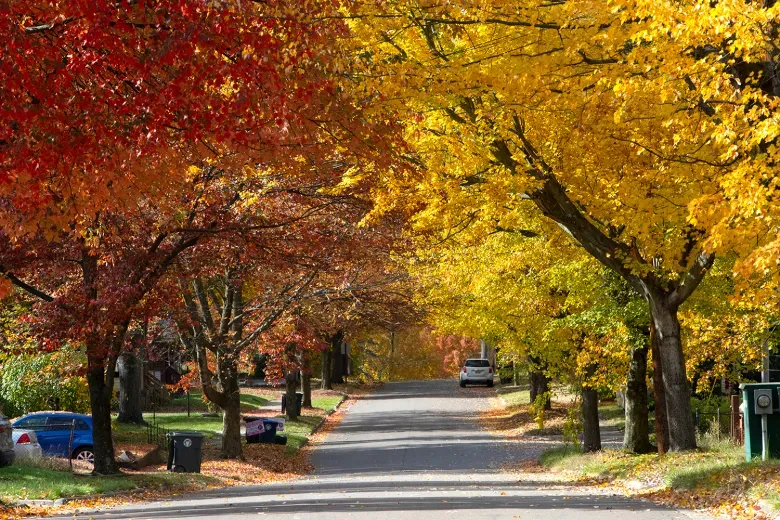
Environment
9
Akron Comes Alive: 1,800 Trees to Revitalize Neighborhoods and Uplift Community Spirit
AKRON, Ohio — This spring, Ohio's industrial heart beats to a new rhythm: the city of Akron has launched an ambitious campaign to plant 1,800 trees to revive its most vulnerable neighborhoods and restore a green soul to the urban landscape. Focused on the Kenmore, Summit Lake, and Eastern Akron areas, this initiative is not just about greening, but a strategic step to improve quality of life, increase property values, and combat environmental challenges. In a city where asphalt often dominates over nature, these trees represent hope for a greener, healthier, and more prosperous future.
Under the gentle spring sun, crews of arborists led by city arborist Matthew Knoll are transforming bare streets into green corridors. Lindsay Avenue, previously devoid of trees, is now adorned with young saplings, and oaks have appeared on Brooklands Drive at the request of local families. “We see a direct correlation: more trees — higher property values; fewer trees — lower,” explains Knoll, whose enthusiasm is contagious. According to him, neighborhoods with the lowest levels of tree cover, such as Kenmore or Eastern Akron, also have the lowest housing prices, and the city aims to address this inequality.
The project, funded from the city budget, offers homeowners free planting, care, and even removal of trees if necessary. Residents can request a tree via the 311 hotline, the website akronohio.gov/311, or a mobile app, choosing local varieties like northern red oak, serviceberry, or sugar maple. “We want people to feel involved,” Knoll says. “Some fear they will have to pay for a tree, but this is our gift to the city.” Residents such as Bill Lyons from Highland Square are delighted. “When we found out a oak would be planted on our lot, it felt like a gift from fate,” he shares, glad that the city chooses trees that are safe for sidewalks and streets.
Insider information suggests the initiative has deeper roots. City officials, concerned about ecological issues, aim not just to beautify streets but also to combat climate change. Data shows that Akron's trees have already absorbed 1.2 million pounds of pollutants and 70,113 tons of carbon dioxide, as well as retained 255 million gallons of stormwater, easing the burden on the sewer system. In areas where asphalt absorbs solar heat, trees reduce temperatures, making summer days more comfortable and lowering air conditioning costs.
However, not all residents support the project immediately. Some worry that trees will complicate lawn care or damage infrastructure. Knoll assures that the city carefully selects species and planting locations to prevent problems. “We’re not just planting trees; we’re building the future,” he says, dreaming of the day when Kenmore or Summit Lake will become green oases with a thriving economy.
For Akron, a city experiencing economic ups and downs, this initiative is more than just greening — it’s an investment in health, well-being, and community pride. Residents like Lyons see it as a sign: authorities are working for the people. “It’s not just about trees,” he says. “It’s hope for a better tomorrow.” As young saplings take root, Akron reminds everyone: even in America’s industrial heart, there’s room for a green miracle.
16.05.2025
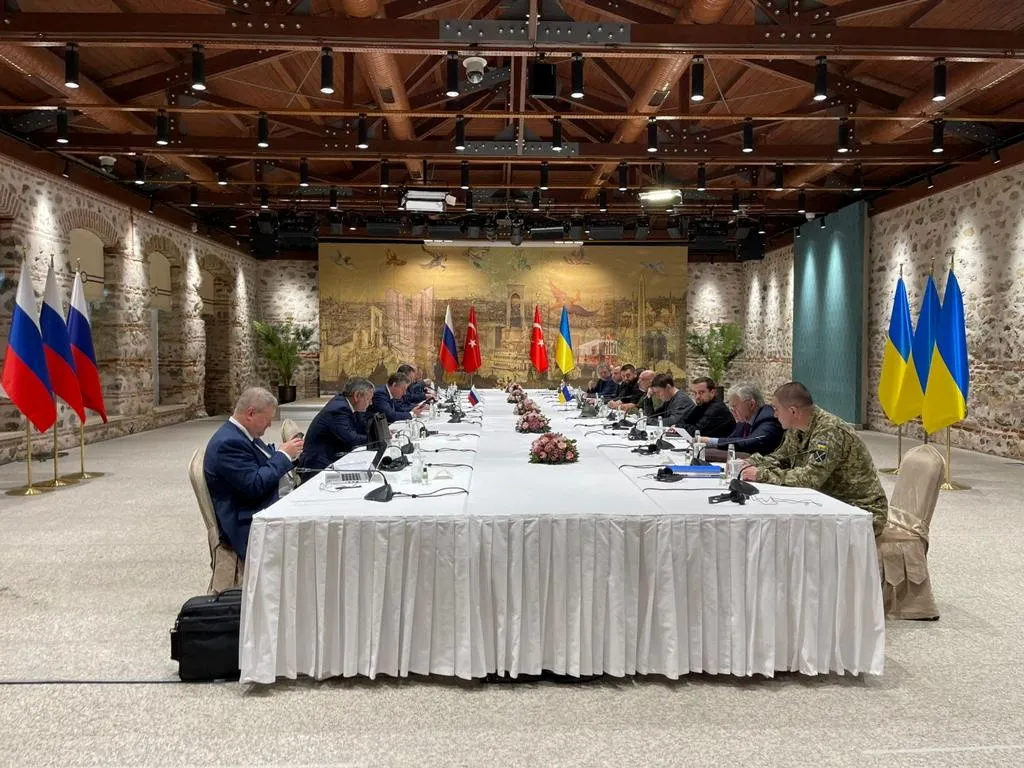
Politics
25
Istanbul Chaos: How the Kremlin Dictates the Pace of Peace Negotiations
ISTANBUL — In the majestic halls of the Dolmabahçe Palace, where once the fate of empires was decided, a new drama is unfolding today: peace negotiations between Ukraine and Russia, the first in three years, are drowning in chaos carefully orchestrated by the Kremlin. Hundreds of journalists buzzing like a hive near the Bosphorus, diplomats hurriedly rewriting plans, and leaders balancing on the edge of hope and disappointment — all this seems to play into Moscow’s hands. As CNN’s chief international security correspondent Nick Peyton Walsh reports from Kyiv, “The Kremlin got exactly what it wanted, and the White House appears to be able to do little about it.”Photo: Getty ImagesChess on the Bosphorus: Putin Holds a PauseThe world held its breath for three days, waiting to see whom Russia would send to Istanbul. President Vladimir Putin’s refusal to personally participate in the negotiations he proposed was not just a diplomatic maneuver but a masterstroke that left everyone in suspense. Instead of himself, Putin sent a second-tier delegation headed by Kremlin aide Vladimir Medinsky, whom Ukrainian President Volodymyr Zelensky called “decorative.” “This isn’t negotiations, it’s a performance,” Zelensky stated in Ankara, standing next to Turkish President Recep Tayyip Erdoğan, whose neutrality in this war is increasingly cracking.Putin’s decision, which analysts describe as “a well-calculated risk,” worked flawlessly. U.S. President Donald Trump’s response was exactly what the Kremlin expected: “Nothing will happen until I meet with Putin.” These words, spoken aboard Air Force One en route to Abu Dhabi, dashed weeks of diplomatic efforts and shifted the focus to a hypothetical bilateral meeting between U.S. and Russian leaders. “Putin has a blank check,” Walsh notes. “He can buy time until Trump takes the next step.”According to insider information, frustration is mounting in the White House corridors because Trump seems to allow Putin to dictate the pace. Sources close to the administration say that Trump is considering a meeting with Putin in the near future, possibly on neutral territory like the Persian Gulf. But there is no urgency for Moscow. Having tested the limits of threats with “strong sanctions” from France and other European allies of Ukraine, Putin is convinced: the West is divided, and Trump is his best trump card.Zelensky in a Trap: Gesture for TrumpFor President Zelensky, Istanbul became a test of political acrobatics. His decision to send a delegation led by Defense Minister Rustem Umerov to Turkey was motivated less by confidence in the success of negotiations and more by the necessity to maintain Trump’s support. “Kyiv must demonstrate readiness for any steps for peace,” Walsh writes, “otherwise pro-Kremlin voices among Trump’s circle will intensify, and support for Ukraine may diminish.”This is delicate balancing. Zelensky, who arrived in Ankara for a meeting with Erdoğan, deliberately avoided Istanbul so as not to appear as waiting for Putin’s mercy. But his presence in Turkey is a signal to Trump: Ukraine is ready to play by his rules, even if it means participating in negotiations with a “decorative” Russian delegation. “This is a gesture of respect to President Trump,” Zelensky openly declared, emphasizing that his main goal is to keep the U.S. in the game.However, this strategy carries risks. In Kyiv, according to sources close to the Presidential Office, there is growing concern that concessions in rhetoric or the format of negotiations could be perceived as weakness. The Ukrainian delegation in Istanbul received a clear mandate: to insist on a 30-day ceasefire, the return of children abducted by Russia, and full prisoner exchanges. But without Putin’s participation, these demands sound like a cry into the void.Chaos as a Weapon: The Kremlin Plays on NervesCNN journalist Claire Sebastian, reporting from Istanbul, describes the scene near Dolmabahçe Palace as “a theater of the absurd.” Two hundred journalists, dozens of cameramen, and no clarity: who will come, when, and whether negotiations will even begin. “Expecting the best rather than knowing the outcome,” cynically remarked Stanislav Ivashchenko, correspondent for the Russian publication Zvëzda, referencing war weariness but also emphasizing Moscow’s unwavering stance.This chaos is not accidental but strategic. Putin, having proposed negotiations in Istanbul after the West’s ultimatum for a 30-day ceasefire or new sanctions, chose the “third way,” which allows him to maintain control. Resuming talks at the same location and with the same people as in 2022 is not just symbolism but a signal: Russia will not concede. “Putin is in no rush,” Sebastian notes. “He keeps everyone on edge as his forces advance in Donbas.”The Russian delegation, led by Medinsky, has no authority for serious decisions, which deepens skepticism. “We came for serious talks, but the Russians are making demands,” an anonymous Ukrainian diplomat stated, accusing Moscow of stalling. The Kremlin, in turn, blames Kyiv for “theatricality,” creating a smoke curtain that hides its own manipulations.Trump and Putin: The Dance of Two LeadersAt the center of this chaos is Donald Trump, whose unpredictability adds volatility to the negotiation process. His statements that “nothing will happen” without his meeting with Putin not only play into the Kremlin’s hands but also put Ukraine in an uncomfortable position. “Trump wants an agreement he can sell as a victory,” a State Department source explains, “but he underestimates how long Putin intends to play the long game.”Russia, on its part, is closely monitoring every word Trump utters, hoping for a reset in relations. Diplomatic circles report that Moscow expects Trump, irritated by slow progress, might make concessions, such as recognizing the annexation of Crimea or freezing the front line. For now, the U.S. president maintains suspense, sometimes hinting at a trip to Istanbul and other times saying he will return home.For Ukraine, each day of this diplomatic dance is a test. Zelensky, who a month ago publicly argued with Trump in the Oval Office, now has to demonstrate loyalty to maintain U.S. support. But in the eyes of Ukrainians, who hear air raid sirens every day, these negotiations increasingly resemble a game where Kyiv is not a player but a stake.What Comes Next?While Dolmabahçe Palace remains the arena of diplomatic maneuvers, and the Bosphorus reflects the world's tension waiting for a result, one thing is clear: the Kremlin has taken the initiative. Putin, keeping everyone in uncertainty, strengthens his positions, while Ukraine is forced to prove its readiness for peace before the only audience that matters — Donald Trump. Whether the Trump-Putin meeting will be a breakthrough or just another act in this game depends on who tires first: the White House or the Kremlin. But as one Turkish diplomat ironically noted, “Stambul has once again become the city where we all wait for Gogo.”
16.05.2025
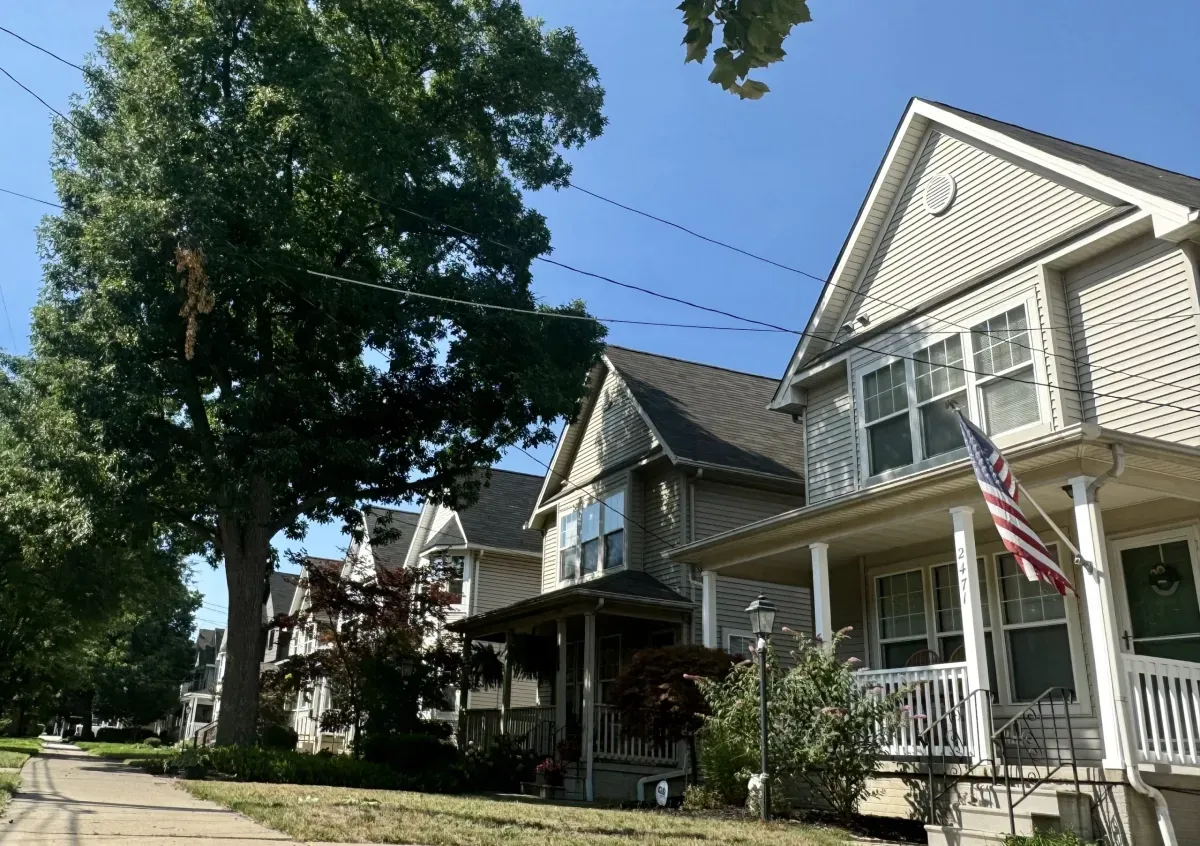
Economics
27
Ohio Citizens Rise: The Fight to Abolish Property Taxes Gains Momentum
CLEVELAND, Ohio — In a state where property taxes have become an unaffordable burden for many homeowners, a civic movement is gaining momentum, challenging the long-standing tax system. A group of residents led by Lakewood activist Bet Blackmar is pushing to include an amendment to the Ohio Constitution on the November ballot to abolish property taxes. For thousands of citizens like Marlen Homan from Cleveland, this is more than just a political initiative — it's a matter of survival.
"When you live on Social Security, every extra dollar on your tax bill is a hit," says Homan, her voice trembling with frustration. Her property taxes have risen to record highs, and she is not alone. Reassessments and voter-approved tax increases have forced many Ohio residents to consider selling their homes — or even leaving them behind because they cannot afford to pay. "Where does this end?" Homan asks, and this question echoes across the state.
The organization "Citizens for Property Tax Reform," led by Blackmar, has become the voice of those feeling abandoned by lawmakers. "Nothing is being done — absolutely nothing," she declares passionately, reflecting the frustration of many. Her movement is not just a protest but an attempt to return power to the people. The amendment they are advocating for could radically change Ohio's fiscal landscape, but its path to the ballot is fraught with obstacles.
State legislators do not seem eager to address the issue. House Speaker Matt Huffman has tasked Republican David Thomas with drafting a bill to cut property taxes but urges patience. "We want to get this right, without rushing decisions," Thomas says, acknowledging citizens' concerns but avoiding specific promises. Insider reports indicate behind-the-scenes discussions in Capitol circles about the political risks of such reforms, as property taxes underpin funding for local schools, police, and other services.
Governor Mike DeWine has expressed serious concerns about the consequences of eliminating taxes. "I understand people's frustrations, but they need to explain how schools, police, and everything else we value in Ohio will be financed," he stated, calling it a "moral obligation." In some areas, such as Cleveland, up to 80% of school budgets rely on property taxes. Without them, the education system could be on the brink of collapse.
However, Blackmar remains undeterred. She proposes alternative solutions, such as a School District Income Tax (SDIT), which could offset losses. "There are other ways," she insists. "We're not saying schools should be left unfunded. We say the current system is unfair." Her movement is not only about abolishing taxes but also about restoring the voice of the people. "It's a reprieve of power to the people," Blackmar declares, and her words resonate with those tired of waiting for government action.
On Wednesday, the Ohio Secretary of State’s Office will decide whether to allow "Citizens for Reform" to begin collecting signatures to place the amendment on the ballot. This moment could be pivotal for the movement, which has already attracted thousands of supporters. However, even if the initiative qualifies for a vote, success is not guaranteed. Polls conducted by local analysts show that many voters support the idea of tax cuts but fear the impact on local communities.
For Marlen Homan and other Ohio homeowners, this fight is more than politics. It’s about dignity, the right to stay in their own homes, and faith that the system can work for the people and not against them. As the state stands at a crossroads, Blackmar’s movement reminds us: when legislators delay, citizens are ready to take matters into their own hands. Will they be heard in Columbus — or will Ohio have to go through a referendum to change the game rules? Time will tell.
15.05.2025

Culture and Art
52
Vyshyvanka Day 2025: Ukraine's Symbol Uniting the World
In May 2025, when the spirit of resistance floods the streets of Ukrainian cities, and the diaspora from New York to Sydney dons colorful shirts, the world celebrates Vyshyvanka Day — a holiday that has become an anthem of national pride, resilience, and love for Ukraine. This day, which falls every year on the third Thursday of May, is not just a tribute to traditional clothing but a powerful symbol of cultural heritage that unites Ukrainians in their fight for freedom and identity, especially in the context of the war with Russia.
Origins of Vyshyvanka: from antiquity to modern times
Vyshyvanka is not just clothing but a code of the nation, woven from threads of history. Its roots date back millennia, to the Trypillian culture, when geometric patterns on fabrics served not only as decoration but also as talismans that protected against evil. Each region of Ukraine embedded its own soul into the embroidery: red and black patterns of Poltava told of passion and struggle, delicate flowers of Podillia spoke of love for the land, and strict rhombuses of Polissya signified ancestral wisdom. Using only linen or hemp fabrics and natural dyes, master artisans for centuries transmitted the art of embroidery from generation to generation, preserving it as a sacred tradition.
In the 19th century, vyshyvanka became a marker of national consciousness. During Polish and Russian occupations, when Ukrainian language and culture were suppressed, the embroidered shirt remained an act of silent resistance. “It was a way to say: we exist, we are alive,” notes Olena Skrypka, a historian from Kyiv National University. In the 20th century, despite Soviet repressions, vyshyvanka maintained its power, becoming a symbol for dissidents and independence fighters.
Vyshyvanka Day: from student initiative to global celebration
Vyshyvanka Day was born in 2006 in Chernivtsi thanks to student Lesya Voroniuk, who proposed dedicating one day to wearing traditional clothing. What started as a local action soon spread across Ukraine and then globally. Today, it is a celebration without an official status but with incredible power: from small villages to metropolises, from the Capitol in Washington to the Élysée Gardens in Paris, people wear vyshyvanky to express solidarity with Ukraine.
In 2025, Vyshyvanka Day takes on special significance. Against the backdrop of ongoing war with Russia, which since 2014, and especially since 2022, has sought to destroy Ukrainian identity, vyshyvanka has become a symbol of resilience. “Each stitch is our response to the aggressor,” says Maria Koval, a vyshyvanka designer from Lviv whose works are worn across Europe and the USA. “It is not just fabric; it is our armor.” In cities affected by Russian shelling, such as Kharkiv or Zaporizhzhia, people wear vyshyvanky as a sign that culture is stronger than missiles.
Love for Ukraine: unity across oceans
Vyshyvanka Day is also a celebration of the diaspora, which maintains love for Ukraine thousands of kilometers from the homeland. In the USA, where over a million Ukrainians live, the holiday is celebrated grandly. In Chicago, where the Ukrainian community is one of the largest, parades in vyshyvanky take place on central squares, and in New York near the Ukrainian Institute of America, fairs with traditional shirts and embroidery workshops are organized. “For us, it’s a way to stay Ukrainian even if we were born here,” shares Anna Hrynyshyn, event organizer in Detroit, whose family emigrated after World War II.
In 2025, support for Ukraine in the USA has reached new heights. According to insider information, American congressmen advocating for military and humanitarian aid to Kyiv plan to join the celebrations by wearing vyshyvanky as a symbol of solidarity. In cities from Los Angeles to Miami, Ukrainian communities organize charity evenings to raise funds for the Armed Forces of Ukraine and war-affected civilians.
The global support is equally impressive. In Canada, Australia, Germany, and even Japan, Ukrainian diaspora communities and their allies organize flash mobs, concerts, and exhibitions dedicated to vyshyvanka. Last year in London, hundreds of people in embroidered shirts formed a living trident in Trafalgar Square, and organizers plan to repeat the event this May. “Vyshyvanka has become a global symbol of freedom,” says Oksana Levchuk, activist from Toronto. “It unites us all.”
Resistance and heritage: vyshyvanka as a symbol of defiance
In 2025, Vyshyvanka Day, as in previous years, reflects the spirit of Ukrainians in the war with Russia. Soldiers wear vyshyvanky under their body armor at the front, and volunteers embroider shirts for wounded fighters in the rear. “It reminds us what we are fighting for,” says Captain Oleksii Shevchuk from Dnipro. “Our culture is what Russia wants to destroy, but it will never defeat it.”
The national heritage embodied in vyshyvanka has become a shield against Russification. In temporarily occupied regions such as Kherson or Melitopol, people risk their lives by wearing embroidered shirts as a sign of protest. In liberated cities like Irpin or Bucha, Vyshyvanka Day is planned to be celebrated with special grandeur this year to emphasize the victory of spirit over destruction.
The future of vyshyvanka: from tradition to modernity
Today, vyshyvanka experiences a renaissance. Contemporary designers like Vita Kin and Yulia Magdych combine traditional ornaments with fashionable cuts, making embroidered shirts popular on global runways. In 2025, a collection inspired by Ukrainian embroidery is planned to be showcased in Paris, and Ukrainian brands are opening new boutiques in New York. “Vyshyvanka is not archaic; it is eternity,” says Magdych, whose works have been worn by Hollywood stars.
Vyshyvanka Day 2025 is not only a celebration but also a reminder: Ukraine is alive, its culture flourishes, and its people are unbreakable. From Kyiv’s boulevards to Brooklyn’s streets, from frontline trenches to world capitals, vyshyvanka unites millions of hearts. In a world ablaze with war and division, it remains a symbol of love, resilience, and hope — a thread connecting the past with the future and Ukraine with the entire world.
15.05.2025
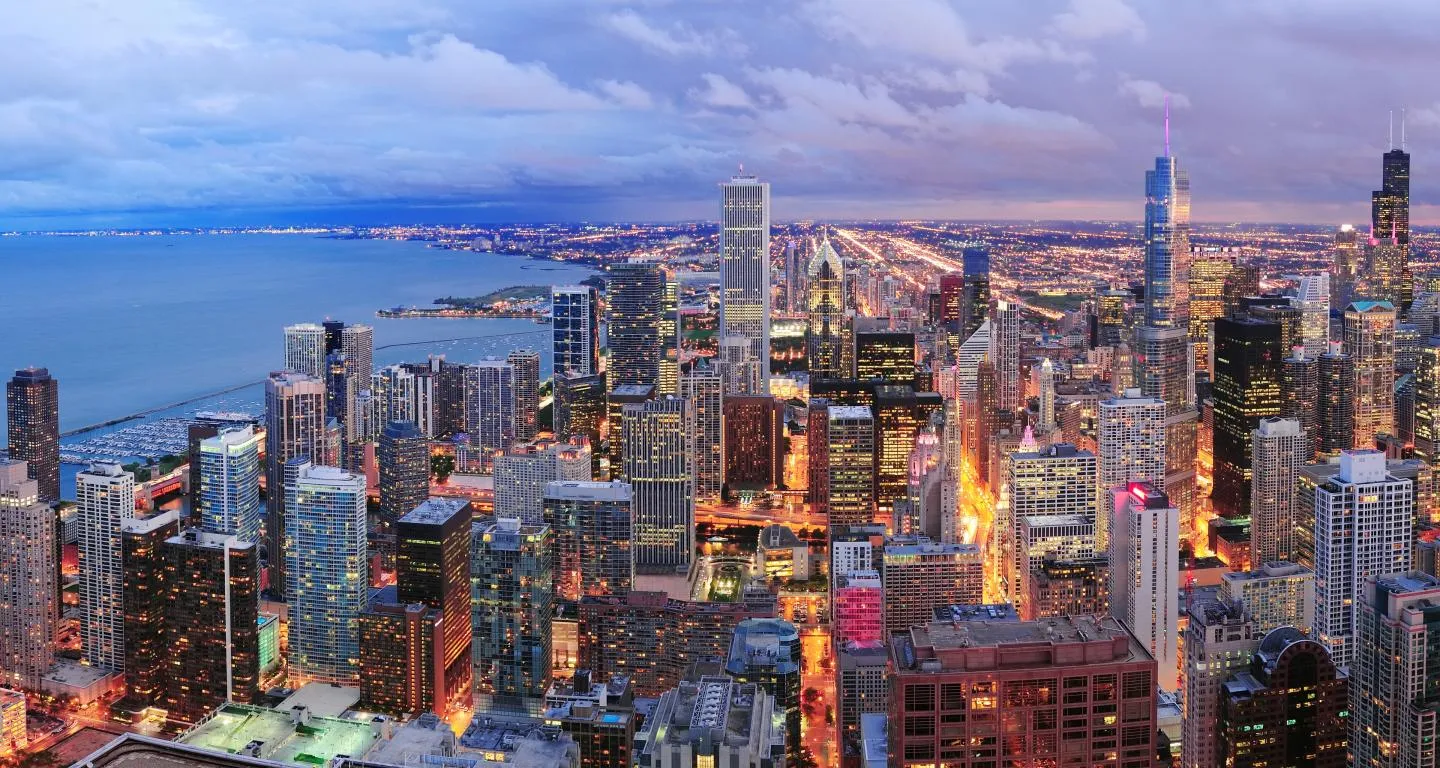
Society
12
Chicago is slowly sinking: the city at risk of floods and destruction
CHICAGO — A city renowned for its skyscrapers and relentless pace faces an invisible but formidable threat: Chicago is gradually sinking. A new study published on May 8 in the journal Nature Cities revealed that 98% of the city’s territory is experiencing land subsidence — a phenomenon that threatens flooding, structural damage, and long-term economic shocks. This "silent danger," as scientists call it, presents Chicago authorities with a complex challenge: how to protect a metropolis sinking under the weight of its own progress.The research, which covered 28 of the most populated cities in the USA, showed that 25 of them suffer from land subsidence. In Chicago, the situation is particularly alarming: the city belongs to nine metropolitan areas where the land is sinking at a rate of over two millimeters per year. Measurements taken from 2015 to 2021 found that practically no corner of Chicago is immune to this process. Researchers point to two main factors: excessive groundwater extraction and relentless urbanization, which, according to forecasts, will only intensify due to climate change."Chicago is built on fragile ground, and we are literally undermining its stability," says Alessandro Rota Loria, an associate professor in the Department of Construction and Environmental Engineering at Northwestern University, whose previous research had already sounded the alarm. "We are not just building a city; we are changing the very earth beneath it." His team discovered in 2023 that in the Loop area, subsidence is accelerating due to "underground climate change" — heat emitted by buildings penetrates the soil and compresses the clayey rocks upon which Chicago stands. The study, conducted using 150 temperature sensors, showed that the temperature underneath the Loop is 10 degrees Celsius higher than under Grant Park, speeding up soil deformation.According to insider information, Chicago’s city authorities currently lack a comprehensive plan to combat this crisis. Researchers emphasize urgent measures: from detailed mapping of risk zones to limiting groundwater extraction and banning intensive development in vulnerable areas. They also recommend insulating new and existing buildings to reduce heat impact on the soil. However, these measures require significant investments and political will, which could pose a challenge in a city already struggling with budget issues.Residents of Chicago — from businessmen in the Loop to families in remote neighborhoods — are increasingly anxious. Land subsidence threatens not only the structural integrity of buildings but also heightens flood risk — a problem already chronic due to proximity to Lake Michigan and frequent storms. "It’s like a slow-moving disaster," says a local engineer who wished to remain anonymous. "We see cracks in foundations, unevenness on roads, but most people don’t realize that the root cause is deeper than it looks."For Chicago, a city that has always prided itself on resilience, land subsidence has become a new test. Scientists warn that without decisive action, risks will only increase, especially amid climate change conditions promising more rainfall and extreme weather events. While Chicago’s skyscrapers continue to kiss the sky, the ground beneath them slowly recedes, reminding us that even the most magnificent cities are not immune to the forces of nature. The question now is whether Chicago can adapt before this silent threat turns into a loud catastrophe.
14.05.2025

Sport
22
NASCAR returns the season final in Homestead, initiating a new era of the rotational championship
Homestead, Florida — At a moment that simultaneously symbolizes a return to traditions and a new strategic course, NASCAR announced on Tuesday: the championship weekend in 2026 will take place at the iconic Homestead-Miami Speedway. This means that for the first time in seven years, champions of the three main NASCAR series — Truck Series, Xfinity Series, and the top-tier Cup Series — will be crowned here.
However, as recent statements from leadership indicate, this is not just about a return. It is the beginning of a rotational formula that, according to NASCAR, aims to "redistribute the dramatic season finale between key markets and historic motorsport venues."
“It’s not just about geography — this is a new level of challenge for drivers and new emotions for fans,” — said Ben Kennedy, NASCAR Executive Vice President, adding that the format will create “a dynamic, unpredictable finish each year.”
The choice of Homestead is not accidental but a strategic acknowledgment of this arena’s role in NASCAR history. From 2002 to 2019, this track was the backdrop for decisive moments of the season. It became a championship forge for legends: Kyle Busch won titles here twice, Brett Kesselowski — in 2012, Joey Logano — in 2018. And, of course, Jimmie Johnson, seven-time champion, engraved his name in Homestead’s asphalt, where each of his titles ended with a triumphant finish in South Florida. It was here that the tunnel was named after him — a unique honor even by NASCAR standards.
Since 2020, the season finale has been held in Phoenix — a transfer initially perceived as an experiment but cemented for several years. However, there were already talks in the sidelines about returning to the “floating finale” model, which allows organizers to adapt the format to the demands of the modern market and media landscape.
“The modern fan is mobile, multi-platform, diverse. They expect the unexpected. We’re not just selling tickets to the track — we’re delivering emotions into every home,” — says one NBC Sports analyst who asked not to be named while commenting on the format change.
2026 will mark a new era: tradition returns to a familiar track, but in a new format — as part of a rotational strategy. After that, championship weekends will probably shift between historic locations — Chicago, Atlanta, Charlotte, and possibly even new city circuits currently in planning stages.
Homestead has once again gained the chance to become the place where tears of joy mix with the track’s dust, where history is rewritten with every steering wheel turn, and where tens of thousands of fans will witness the birth of a new champion — or a legend.
14.05.2025

Society
27
Parma Schools in despair: voters again rejected tax increase, threatening educational prospects
PRAMA, Ohio — On Tuesday, May 6, the Prama community, Parma Heights, and Seven Hills delivered yet another blow to the ambitious plans of local schools by rejecting Tax Measure No. 22. This defeat, the third in the past seven years, left educators puzzled and the future of the school district in question, as without new revenue, Parma faces the prospect of painful cuts and deteriorating education quality.
According to the final but unofficial results from the Cuyahoga County Election Board, 59.28% of voters (8,947 people) voted against the tax increase, while only 40.72% (6,147 people) supported it. “We are very disappointed,” admitted Charles Smalec, the Parma City Schools superintendent, whose voice trembled with disillusionment. “We believed our campaign was well thought out and aimed at those who, we thought, would support us. But the result was devastating.”
The proposed 10-year, 6.9 mil tax was supposed to bring the district $23 million, which would have cost a homeowner of $100,000 just $20.13 per month. These funds could have provided stable funding through 2031, supporting programs that, according to Smalec, helped the district achieve significant progress. “Our test results have improved, and we expanded offerings for students,” he emphasized. “But without new funds since 2011, we are in a difficult position.”
This defeat is not new for Parma. Similar attempts to introduce a surtax failed in 2017 and 2018, further deepening the district’s financial chasm. Smalec, who will leave his position at the end of the school year to lead the Pickerington schools, warned that the community will feel the effects of this decision. “The district will revisit this issue in November,” he assured. “We hope to keep the tax at 6.9 mils, but it will all depend on state funding and our five-year projections.”
Without a new tax, Parma faces a grim outlook. Smalec painted a bleak picture: classes, currently with 22–24 students, could grow to 30 or more. Mandatory credits for high school seniors could be reduced to five per year, and extracurricular activities — from sports to arts clubs — will become inaccessible due to “astronomical” fees. “We cannot ignore the approaching fiscal cliff,” he warned. “If we do nothing, by 2028, the deficit will be catastrophic.”
Insider sources reveal that teachers and administrators are already preparing for difficult conversations about layoffs and program cuts. Parents who supported the tax express outrage, pointing out that the community underestimates the long-term consequences for children. “This is not just about money,” said one mother, who wished to remain anonymous. “It’s about the future of our city.”
As Parma prepares for another attempt to persuade voters in November, Smalec urged the community to consider their priorities. “We are not asking for anything extraordinary,” he said. “We are asking to invest in our children.” But after three consecutive defeats, the question remains whether the community is willing to listen — and whether it will be too late to act when the financial crisis finally hits Parma’s schools.
13.05.2025
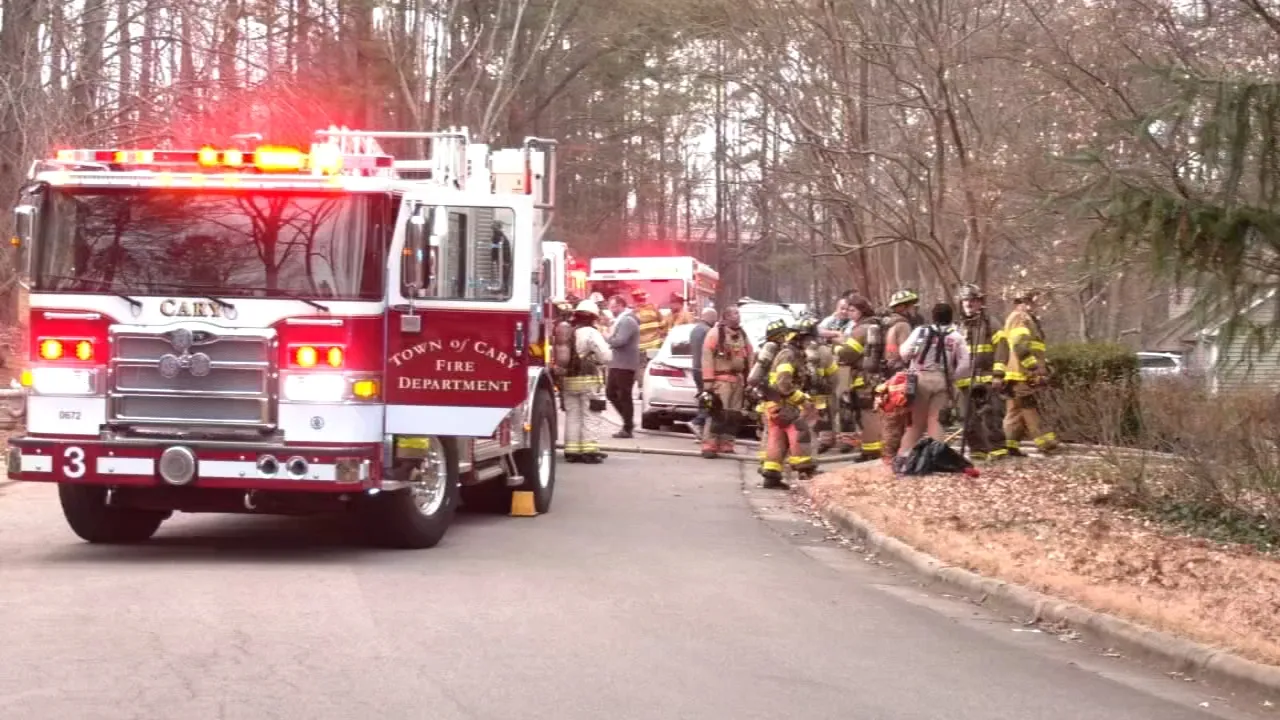
Society
23
Possible house explosion in a Chicago suburb: authorities urge to avoid the area
Peacefulness of the north-western suburb of Chicago, the unincorporated town of Cary, was shattered by a deafening explosion believed to have occurred in a residential building. Authorities, who responded immediately to the incident, closed off the area and appealed to the community to avoid the zone while rescue services investigate the circumstances of this alarming event.Around 14:00, emergency crews and firefighters arrived at Fasan Trail, 6700, following reports of a house fire that was likely accompanied by a powerful blast. Video footage filmed by local residents captured the moment when a loud rumble shook the neighborhood, and debris flew down the street, leaving neighbors in shock. Cary Fire Department confirmed in a Facebook post that the area around the scene was cordoned off for traffic, urging citizens to stay away to not hinder rescue operations.The cause of the explosion remains a mystery at this time. Whether there were people in the building at the moment of the incident and whether there are any casualties — these questions are still unanswered. According to insider information, investigators are considering several theories, including a possible gas leak or electrical malfunction, although no hypothesis has been officially confirmed. Police and firefighters are operating in enhanced mode, inspecting the area and collecting witness testimonies to reconstruct the sequence of events.Fasan Trail, a quiet street lined with neat single-story houses, is a typical example of a peaceful suburb where such incidents are extremely rare. Local residents, with whom it was possible to speak, express concern and unease. “It felt like an earthquake,” said one neighbor who wished to remain anonymous. “We all rushed outside, but no one knew what was happening.”Cary authorities, coordinating the actions of emergency services, emphasized the importance of community cooperation. “We ask everyone to avoid the area so our crews can work safely and without interruption,” the official statement read. Residents are also encouraged to provide any information that might assist the investigation, including CCTV footage or eyewitness accounts.This incident serves as another reminder of the vulnerability even of the most peaceful communities. While investigators try to uncover the cause of the explosion, Cary residents remain tense, waiting for news about what exactly caused this dramatic event in their quiet suburb.
13.05.2025